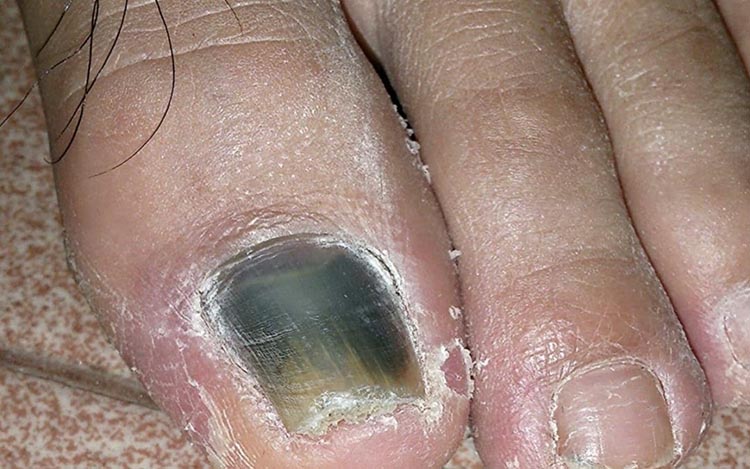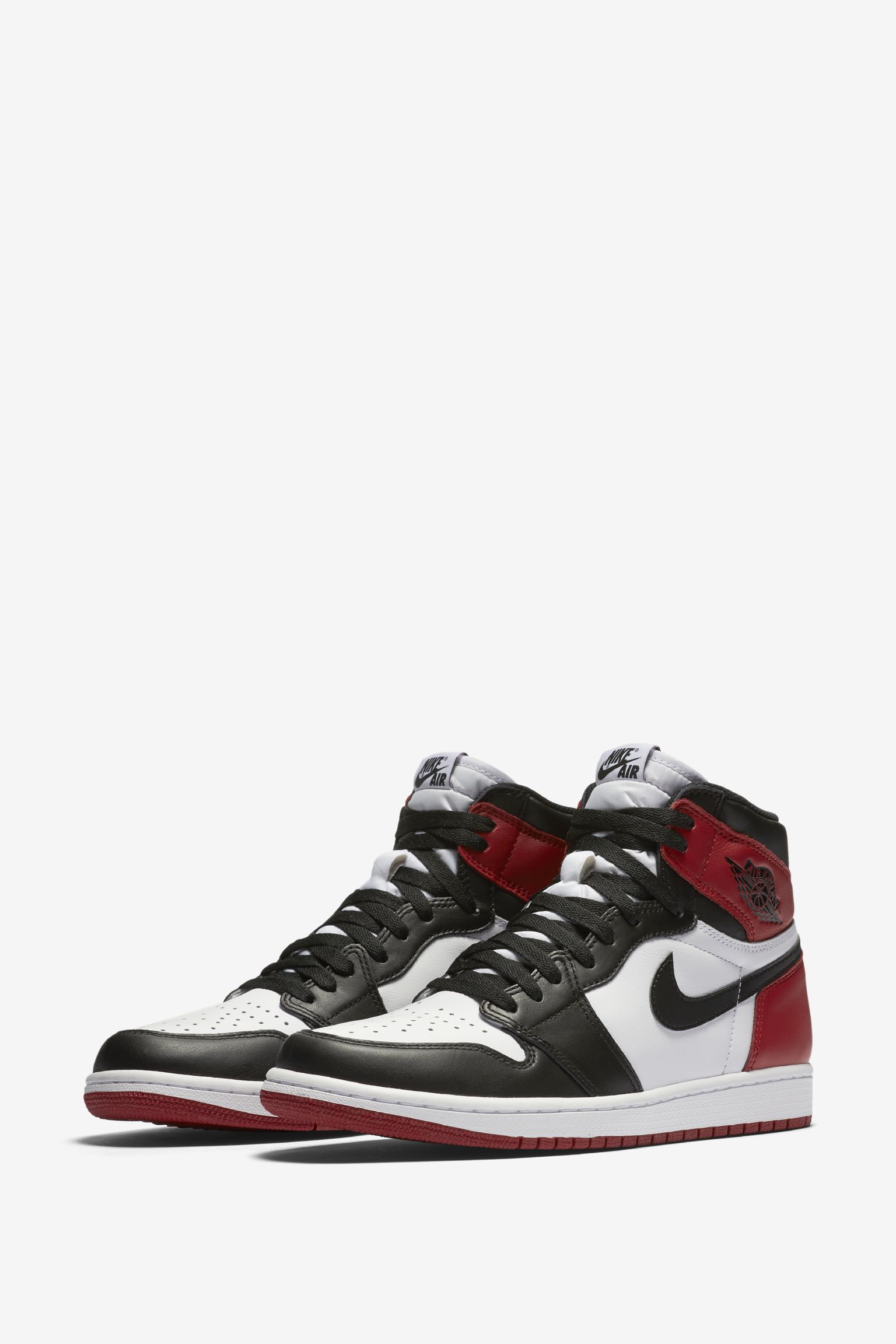Black Toe: Medical Causes, Treatments, and the Iconic Air Jordan 1

Key points
- Acute Injury: Dropping a heavy object on your foot or stubbing your toe forcefully.
- Repetitive Trauma: This is often called "runner's toe" or "hiker's toe." It occurs when your toe repeatedly hits the front or top of your shoe during activities like running (especially downhill), hiking, or playing sports. Ill-fitting shoes are a major culprit.
The term "black toe" can send you down two very different paths. For some, it brings to mind a painful, discolored toenail from a long run or a stubbed toe. For others, it conjures images of one of the most iconic and sought-after sneakers in history.
This comprehensive guide covers both worlds. We'll delve into the medical reasons behind a black toenail, exploring its causes, treatments, and when you should be concerned. We will also step into the world of sneaker culture to understand the legacy of the legendary Air Jordan 1 "Black Toe."
The Medical Condition: Understanding Black Toenails
Seeing your toenail turn black can be alarming. While it's often the result of a simple injury, it's important to understand the potential causes to ensure you're taking the right steps for your health.
Common Causes of a Black Toenail
According to podiatry experts and sources like Verywell Health, a black toenail can stem from several issues, ranging from minor to serious.
1. Trauma and Injury (Subungual Hematoma)
This is the most common reason for a black toenail. A subungual hematoma is essentially a bruise under your nail plate caused by bleeding from broken blood vessels. This can happen in two ways:
- Acute Injury: Dropping a heavy object on your foot or stubbing your toe forcefully.
- Repetitive Trauma: This is often called "runner's toe" or "hiker's toe." It occurs when your toe repeatedly hits the front or top of your shoe during activities like running (especially downhill), hiking, or playing sports. Ill-fitting shoes are a major culprit.
 Image Source: Podiatry Group of Georgia
Image Source: Podiatry Group of Georgia
2. Fungal Infections (Onychomycosis)
While often associated with yellow or white discoloration, fungal infections can cause a buildup of debris under the nail, leading to a dark, blackish appearance. Fungi thrive in the warm, moist environment of socks and shoes, and infections won't resolve on their own without treatment.
3. Underlying Medical Conditions
In some cases, a black toenail can be a symptom of a larger health issue. Conditions that affect circulation can lead to nail discoloration, including:
- Diabetes
- Kidney disease
- Heart disease
- Anemia
4. Melanoma (A Rare but Serious Cause)
In rare instances, a black or dark brown streak under the nail can be a sign of subungual melanoma, a serious form of skin cancer. Unlike a bruise that grows out with the nail, a melanoma streak typically originates from the nail matrix (the base of the nail) and persists.
Differential Diagnosis: Trauma vs. Fungus vs. Melanoma
Distinguishing between the causes is critical. Here’s a breakdown to help identify the likely source of your black toe.
| Feature | Traumatic (Subungual Hematoma) | Fungal (Onychomycosis) | Melanoma (Subungual) |
|---|---|---|---|
| Onset | Sudden, after a known injury or repetitive activity. | Gradual, develops over weeks or months. | Gradual, with no history of trauma. |
| Color | Red, purple, dark brown, or black. | Yellow-black, brown, or gray. Often starts as yellow/white. | Dark brown or black streak (longitudinal). |
| Appearance | A bruise-like blotch under the nail. | Thickened, brittle, crumbly nail. Debris under the nail. | A distinct band or streak that may widen over time. |
| Progression | Grows out with the nail. A clear gap appears at the base. | Worsens without treatment, may spread to other nails. | The band widens, especially near the cuticle. May spread to skin. |
| Key Sign | History of trauma. | Thick, brittle texture. | Hutchinson's Sign: Pigment extends to the surrounding skin. |
The "ABCDEF" Rule for Subungual Melanoma
Dermatologists use this acronym to help spot potential melanoma:
- A: Age (most common in 50-70 year olds) and ethnicity (higher prevalence in African, Japanese, Chinese, and Indigenous individuals).
- B: Brown-black band wider than 3mm with irregular borders.
- C: Change in the band's appearance over time.
- D: Digit involved (thumb and big toe are most common).
- E: Extension of pigment to the surrounding skin (Hutchinson's sign).
- F: Family history of melanoma.
Treatment, Healing, and Prevention
Treatment depends entirely on the cause.
- For Trauma: If the pain is mild, no treatment is needed; the discolored area will simply grow out, which can take 6 to 12 months. If there's significant pain and pressure from blood buildup, a podiatrist can perform a procedure called nail trephination to drain the blood and provide immediate relief.
- For Fungal Infections: Treatment often involves topical or oral antifungal medications prescribed by a doctor. Over-the-counter remedies are less effective.
- For Melanoma: If melanoma is suspected, a doctor will perform a biopsy. Treatment involves surgical removal of the cancerous tissue.
Prevention Strategies for Athletes ('Runner's Toe')
- Properly Fitted Shoes: Ensure there's a half-inch of space between your longest toe and the end of the shoe.
- Correct Lacing: Use lacing techniques that lock your heel in place to prevent your foot from sliding forward.
- Moisture-Wicking Socks: Keep feet dry to reduce friction and prevent fungal growth.
- Trim Toenails Correctly: Keep nails short and trimmed straight across.
When to See a Doctor
Consult a doctor or podiatrist if:
- You don't remember injuring your toe.
- The discoloration is a streak rather than a blotch.
- The discoloration spreads to the skin around the nail.
- There are signs of infection, like pus, redness, foul odor, or increasing pain.
- You have diabetes or a circulatory condition.
The Cultural Icon: The Air Jordan 1 "Black Toe"
On the other side of the spectrum, "Black Toe" is a name that holds legendary status in sneaker culture. It refers to one of the original and most beloved colorways of the Air Jordan 1, first released in 1985.
 Image Source: Nike SNKRS
Image Source: Nike SNKRS
The shoe is famous for its unique color blocking, which differs from the more common "Bred" (Black + Red) and "Chicago" styles. Michael Jordan famously wore the "Black Toe" in promotional photoshoots, cementing its place in basketball and fashion history.
*Video Source: [Air Jordan 1 BLACK TOE Reimagined 2024 REVIEW & On Feet](https://www.youtube.com/watch?v=oDeHRGmXZeA)*The "Reimagined" Debate: Authenticity vs. Modernization
In 2025, Jordan Brand is set to release the Air Jordan 1 High OG "Black Toe Reimagined," a launch that has sparked a passionate debate among sneaker enthusiasts. The "Reimagined" series reintroduces classic sneakers with unique twists, such as aged aesthetics or different materials.
This new version, however, makes a bold change that references the shoe's earliest prototype stages:
- No Wings Logo: The iconic "Wings" logo on the ankle collar is replaced with the words "Air Jordan."
- Black Nylon Tongue: This detail is taken from Michael Jordan's personal player-exclusive pair.
This has divided the community:
- Purists argue that a retro release should be as faithful to the original 1985 retail version as possible, and removing the Wings logo is a step too far.
- Modernists and Storytellers appreciate the creative nod to the shoe's history, viewing it as a fresh narrative that offers a deeper look into the design process.
This debate highlights a central tension in sneaker culture: how do you honor a classic while still innovating and keeping the story fresh for a new generation?
References
- The 4 Most Common Causes of Black Toenails - Foot HealthCare Associates
- 6 Causes of a Black Toenail and How to Treat It - Verywell Health
- Black Toenail: Common Causes and When You Should Be Concerned - Balance Health
- Black Toe What is it? - Podiatry Group of Georgia
- Air Jordan 1 Retro 'Black Toe' Release Date - Nike
- Where to Buy the Air Jordan 1 Retro High OG Reimagined Black Toe - Sole Retriever

About the author
Elena Vance, MD, is a double board-certified dermatologist and pediatric dermatologist. She is an assistant professor of dermatology at a leading medical university in California and is renowned for her research in autoimmune skin disorders.